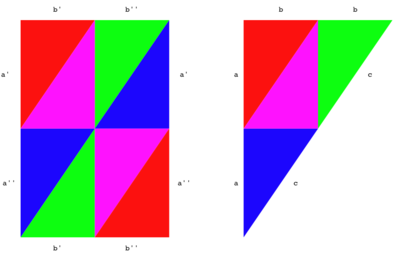Riemann-Hurwitz formula
Jump to navigation
Jump to search
In algebraic geometry the Riemann-Hurwitz formula, named after Bernhard Riemann and Adolf Hurwitz, states that if C, D are smooth algebraic curves, and is a finite map of degree d then the number of branch points of f, denoted by B, is given by
Over a field in general characteristic, this theorem is a consequence of the Riemann-Roch theorem. Over the complex numbers, the theorem can be proved by choosing a triangulation of the curve D such that all the branch points of the map are nodes of the triangulation. One then considers the pullback of the triangulation to the curve C and computes the Euler characteristics of both curves.


